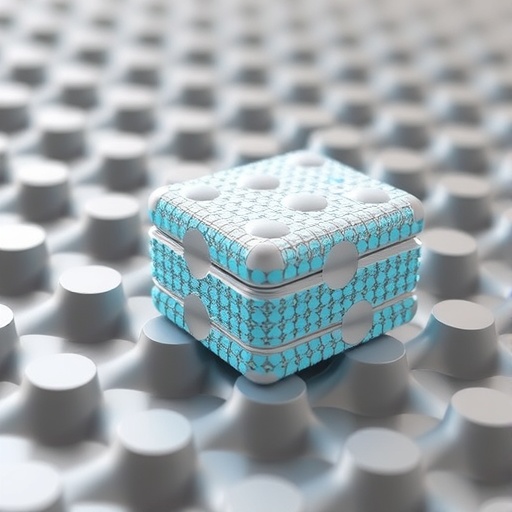As the global imperative to achieve net-zero carbon emissions intensifies, the energy landscape is undergoing a profound transformation. Transitioning from the long-standing reliance on fossil fuels to renewable energy sources like solar and wind heralds a new era, yet it also introduces formidable challenges. Chief among these challenges is the intermittency of renewables, which demands efficient energy storage and conversion solutions to ensure grid reliability and performance. Electrochemical technologies, particularly fuel cells, water electrolyzers, and redox-flow batteries, are poised to address this need by offering flexible operation and the crucial ability to decouple energy from power delivery.
At the heart of advancing these technologies lies the design and optimization of porous electrodes—engineered structures that facilitate ion and reactant transport within electrochemical devices. The intricate micro- and nanoscale architecture of these electrodes creates anisotropic pathways that govern mass transport phenomena. However, predicting and tailoring these transport properties presents a formidable challenge due to the complex, heterogeneous geometry. Traditional modeling and simulation methods are often computationally intensive and slow, creating a bottleneck that significantly hampers progress toward higher energy and power densities in electrochemical devices.
Addressing this critical bottleneck, a pioneering team of researchers has developed an innovative deep learning framework named Electrode Net. This approach leverages recent advances in artificial intelligence to model three-dimensional porous electrode geometries with exceptional accuracy and speed. By representing the electrode’s complex architecture through signed distance fields—a mathematical technique that precisely characterizes the three-dimensional geometry—the method feeds this representation into a sophisticated three-dimensional convolutional neural network (3D CNN). This network is trained to decode the relationship between microstructural features and the resultant anisotropic transport properties.
The researchers constructed a robust dataset comprising 15,433 samples of porous electrode microstructures, each paired with corresponding anisotropic transport data generated by a validated pore-network model. Through extensive training and testing on this dataset, Electrode Net demonstrated remarkable predictive performance, achieving coefficients of determination (R²) exceeding 0.95. This level of accuracy significantly surpasses that of existing advanced models, underscoring the efficacy of their deep learning approach in capturing the nuanced interplay between structure and function in porous media.
One of the most transformative aspects of Electrode Net is its computational efficiency. By harnessing the signed distance field representation and the inherent learning capabilities of the convolutional neural network, the model achieves an astounding reduction in computation time—up to 96% faster than conventional numerical simulations. Where traditional methods might require hours of intensive computation, Electrode Net can deliver predictions within minutes or even seconds. This rapid inference capability empowers researchers and engineers to explore expansive design spaces swiftly, facilitating accelerated screening and optimization of electrode geometries.
Crucial to the model’s utility and versatility, the team validated Electrode Net across multiple electrochemical technology platforms. Fuel cells, water electrolyzers, and redox-flow batteries—each with distinct operating regimes and electrode structures—served as testbeds to gauge the framework’s generalization ability. Impressively, the model sustained its high-level predictive accuracy across these diverse systems. This cross-technology reliability signals that Electrode Net is not confined to a single application but can serve as a universal tool to expedite electrode design across a spectrum of clean energy devices.
Building upon the model’s predictive prowess, the researchers introduced an integrated multiscale design workflow. This process begins with Electrode Net estimating pore-scale anisotropic transport parameters based on three-dimensional microstructural input. These parameters are then upscaled into cell-level simulation models, which account for realistic operational constraints and device physics. Through this hierarchical modeling paradigm, designers can optimize electrode architecture not purely from a theoretical standpoint but within the tangible context of device performance.
To illustrate this workflow’s practical effectiveness, the team applied it to the gas diffusion layer in proton-exchange-membrane fuel cells (PEMFCs), a critical component influencing overall efficiency and durability. Leveraging Electrode Net’s output, the cell-scale simulations guided modifications to the pore and fiber structures of the electrode, culminating in designs exhibiting significantly enhanced limiting power density and limiting current density. Such improvements promise tangible benefits in real-world fuel cell deployments, where maximizing power output while minimizing losses is paramount.
This melding of deep learning with physics-based simulation signifies a watershed moment for electrochemical device development. By directly learning from volumetric, three-dimensional structural data, Electrode Net bypasses long-standing inefficiencies inherent in traditional modeling. The method offers a scalable and generalizable framework capable of accommodating the multifaceted geometries typical of porous electrodes. This capability unlocks new pathways for rapid innovation, reducing the time from conceptual design to functional device.
Moreover, the implications of this research extend beyond immediate applications in renewable energy storage and conversion. The principles underpinning Electrode Net could be adapted to other domains where complex porous structures dictate functional performance, including catalysis, filtration, and biomedical engineering. The demonstrated approach illustrates how coupling advanced computational representations with data-driven methodologies can unravel complex microstructural relationships that have eluded analytical characterization.
In sum, the Electrode Net framework heralds a paradigm shift in porous electrode science and engineering. Through meticulous dataset curation, innovative geometric representation, and deep neural network design, the researchers have delivered a tool that effortlessly bridges microscopic complexity and macroscopic performance. This technology empowers the clean energy sector to surmount a critical bottleneck, accelerating the optimization of electrochemical reactors and ultimately aiding the worldwide transition to sustainable energy futures.
As the urgency for climate action fuels demand for next-generation energy solutions, tools like Electrode Net provide the necessary computational arsenal to keep pace. They enable a new era of materials informatics-driven innovation, fostering the design of power-dense, cost-effective, and durable electrodes. Such progress promises to bolster the viability of electrochemical devices at scale, contributing decisively to global net-zero ambitions and the broader goals of energy sustainability.
Subject of Research: Electrochemical porous electrode design and optimization using deep learning
Article Title: Electrode Net: A Deep Learning Framework for Multiscale Porous Electrode Optimization in Electrochemical Devices
Web References:
Image Credits: ©Science China Press
Keywords
Porous electrodes, deep learning, electrochemical devices, fuel cells, water electrolyzers, redox-flow batteries, anisotropic mass transport, signed distance fields, convolutional neural networks, computational modeling, energy storage, renewable energy




